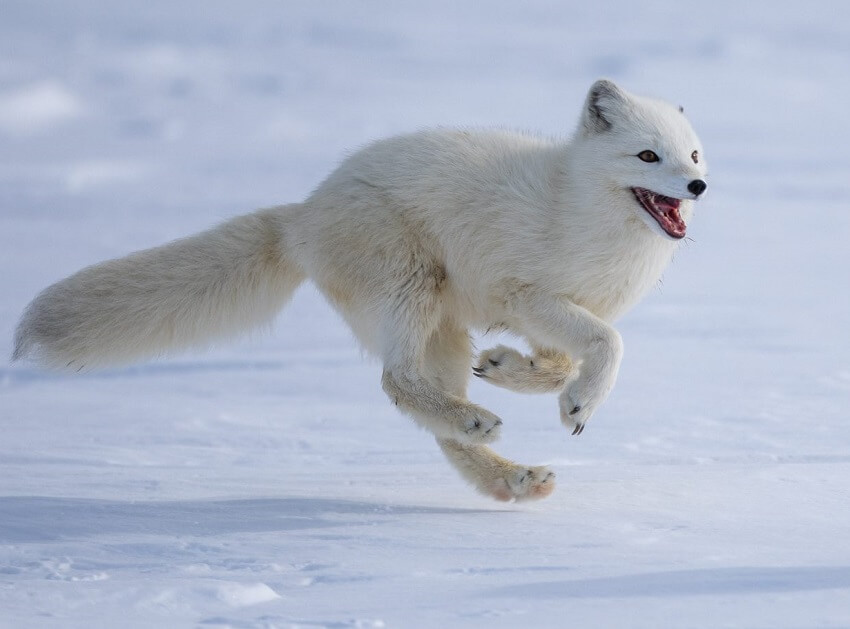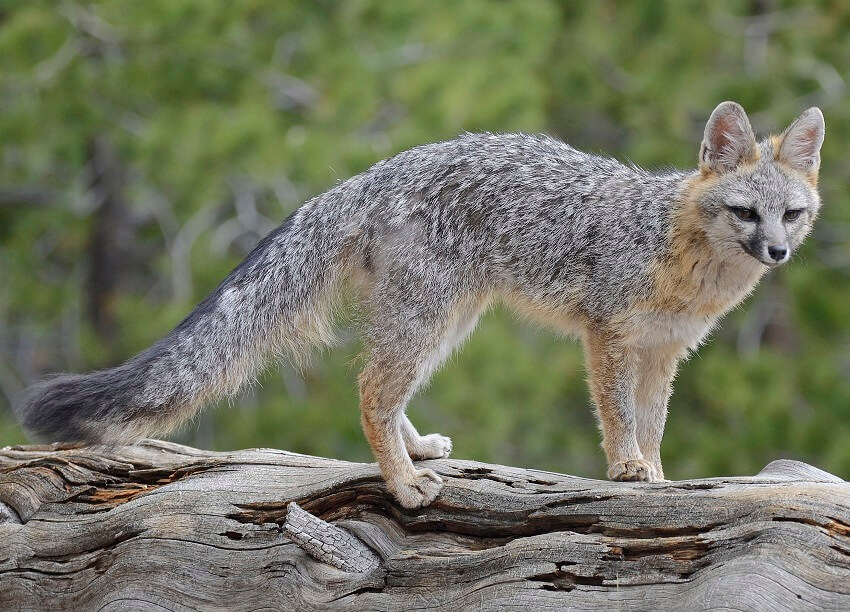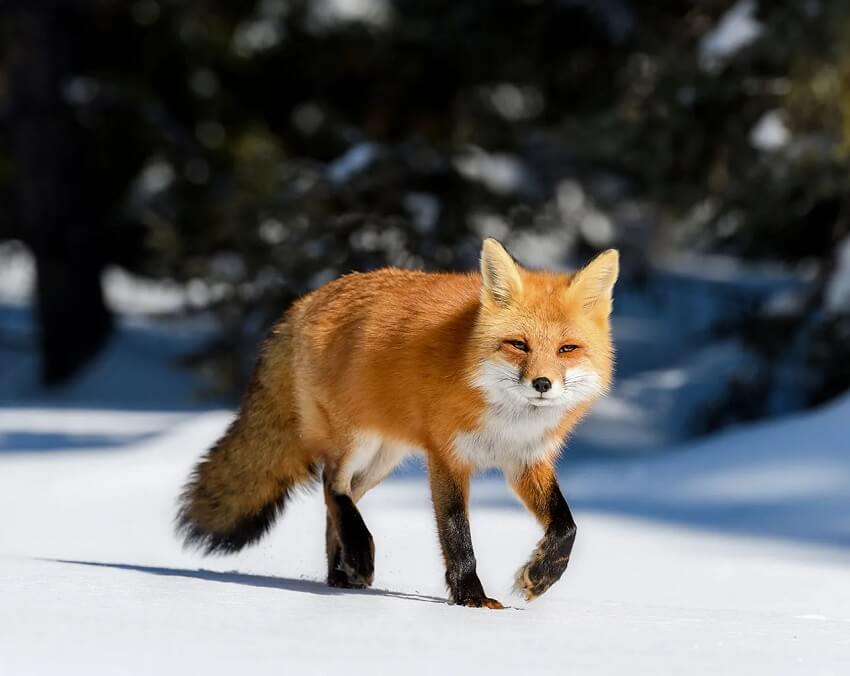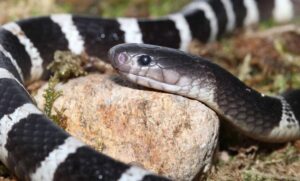In the vast wilderness, there’s a beautiful and mysterious creature covered in golden fur, with intelligent eyes that reveal infinite wisdom and agility. They are the largest foxes in the world, surpassing our common understanding. Join KnowAllAnimals to explore the Top 3 Largest Fox Species in the World in the following article!
1. Top 3 Largest Fox Species in the World – Meet the Giants of the Fox Family
Do you think of foxes as small and nimble? In reality, there are giant fox species with sizes comparable to a gray wolf. Let’s explore the top three largest fox species in the world to learn more about the “giants” of the fox family.
1.1. Arctic Fox (Vulpes lagopus)
- Kingdom: Animalia
- Phylum: Chordata
- Class: Mammalia
- Order: Carnivora
- Suborder: Caniformia
- Family: Canidae
- Subfamily: Caninae
- Genus: Vulpes
- Species: V. lagopus
The Arctic Fox, a species that lives in the Arctic region, is one of the largest foxes in the world, with a length of up to 120 cm (47 inches)—almost the size of a gray wolf (105-150 cm).
Arctic foxes typically live in cold and desolate Arctic regions, which helps them adapt to an extremely harsh environment. They have a thick white coat, a feature that helps them stay warm in the freezing cold. This coat is also one of their most important survival tools, as it provides effective camouflage.
With a body length of 120 cm and a long tail, the Arctic fox is relatively large but also lightweight, allowing it to move easily on thick ice.
Arctic foxes tend to be solitary and highly territorial, often moving across a large range. They primarily hunt marine mammals like seals and seabirds for food. They have acute hearing and a keen sense of smell. They are also skilled divers and can forage for food underwater, making them highly adaptable animals.
The breeding season for Arctic foxes is typically in the spring. A female fox will dig a den in the ice and give birth to a litter of 2 to 12 pups. When born, the pups usually have soft brown fur, which gradually turns white as they grow to adapt to the Arctic environment.
With global warming, the Arctic ice is melting at an increasing rate, posing a challenge to the Arctic fox’s habitat. Habitat degradation and an increase in predators pose a threat to the survival of the Arctic fox. Therefore, protecting the Arctic ecosystem and mitigating climate change are crucial for the survival of this charming fox species.

1.2. Gray Fox (Urocyon cinereoargenteus)
- Kingdom: Animalia
- Phylum: Chordata
- Class: Mammalia
- Order: Carnivora
- Suborder: Caniformia
- Family: Canidae
- Subfamily: Caninae
- Genus: Urocyon
- Species: U. cinereoargenteus
As one of the largest fox species in the world, the Gray Fox is a fascinating and mysterious animal. It can weigh over 10 kg (22 lbs), which is quite impressive for a fox.
The gray fox is known for its gray coat, handsome appearance, and bushy tail. This gray fur helps the gray fox blend in with its natural environment, providing good camouflage. In addition, the gray fox has a relatively large body, strong limbs, and sharp claws, which give it excellent hunting abilities.
Gray foxes are typically nocturnal and are more active at night, so they are also known for hunting nocturnal animals. They usually prey on small mammals such as rabbits, birds, and mice. The gray fox has excellent hearing and a keen sense of smell, allowing it to track and detect prey in the dark. They often look for food and shelter in bushes and tree hollows, and large forests and open grasslands are their favorite habitats.
Gray foxes demonstrate superior intelligence and adaptability in both movement and hunting. They are typically solitary or live in small groups during the breeding season. After a successful mating, the female gray fox will give birth between June and July, usually to a litter of 5 to 7 pups. The pups will be dependent on their mother for about two months before learning to live independently.
Gray foxes face several threats that pose certain challenges to their survival. Habitat destruction, pesticide pollution, and illegal hunting are among the causes of the gray fox’s decline. Additionally, climate change has also impacted their habitat. Fortunately, the gray fox population remains relatively stable, and they are legally protected in many countries from overhunting and habitat destruction.

1.3. Red Fox (Vulpes vulpes)
- Kingdom: Animalia
- Phylum: Chordata
- Class: Mammalia
- Order: Carnivora
- Suborder: Caniformia
- Family: Canidae
- Subfamily: Caninae
- Genus: Vulpes
- Species: V. vulpes
Foxes are intelligent and clever animals found all over the world, but one of the most striking species is the Red Fox. It is one of the largest foxes in the world and has captured people’s attention and interest with its beautiful appearance and charming characteristics.
The Red Fox (Vulpes vulpes) can reach a body length of 90 cm (35 inches). It has a slender, elegant body and a long, fluffy tail that can sometimes be more than half the length of its body.
The Red Fox has a relatively small head with oval-shaped eyes and forward-facing ears. It has a well-developed sense of smell and hearing, which makes it an excellent hunter and very alert. Other unique features of the Red Fox include a pointed snout and sharp teeth, which help it hunt small mammals, birds, insects, and fruits.
Red foxes are highly adaptable to various environmental conditions and are widely distributed in Europe, Asia, and North America. They mainly live in diverse habitats such as forests, grasslands, deserts, and farmlands. The Red Fox is a nocturnal animal; it primarily hides in dens, bushes, or underground burrows to rest during the day and is active at dusk and dawn. They build their own nests by digging burrows or taking over the burrows of other animals.
The Red Fox is highly adaptable and can withstand extreme temperatures as well as changes in food availability in different regions. It is also known for its intelligent hunting strategies, such as digging up rodent burrows to catch prey. Furthermore, the Red Fox has a symbiotic relationship with humans, as it preys on rodents and pests in agricultural lands.
The Red Fox plays an important role in the ecosystem. They are natural regulators, maintaining ecological balance by controlling the populations of small mammals and birds. The Red Fox is also a food source for many predators like gray wolves, hawks, and large felines. Therefore, the existence of the Red Fox is vital for maintaining the stability of natural ecosystems.

2. FAQs
1. What is the largest fox in the world?
The largest recorded fox is the Red Fox (Vulpes vulpes), which can reach a length of nearly 90–100 cm (35-39 inches), not including the tail, and weigh up to 14 kg (31 lbs).
2. Are large foxes dangerous to humans?
Generally, foxes, regardless of their size, are quite shy and avoid humans. However, they may attack if cornered or if they are sick with rabies.
3. Where can the largest foxes live?
Large fox species are widely distributed in North America, Europe, and Asia, where they can easily adapt to various environmental conditions.
4. Are foxes closely related to wolves?
Yes. Foxes and wolves are both in the family Canidae (the dog family), but foxes are typically much smaller, with the exception of a few exceptionally large species.
Foxes are not only known for their agility and intelligence, but some species can reach astonishing “giant” sizes. Learning about the top three Largest Fox Species in the world helps us see the great diversity and amazing adaptability of nature. Thank you for reading this article from Know All Animals!



